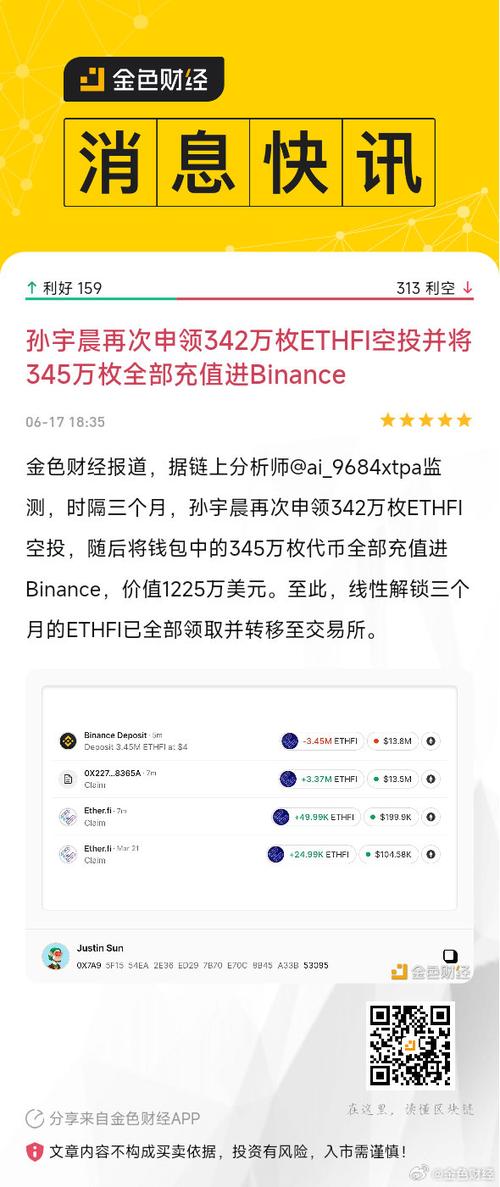
Understanding Binance ETH 2.0 Staking: A Comprehensive Guide
Binance, one of the leading cryptocurrency exchanges, has ventured into the world of Ethereum 2.0 staking. If you’re considering participating in this exciting opportunity, it’s crucial to understand the ins and outs. This article will delve into the details of Binance ETH 2.0 staking, covering everything from the basics to the potential rewards and risks involved.
What is Binance ETH 2.0 Staking?
Binance ETH 2.0 staking is a service offered by Binance that allows users to earn rewards by locking up their Ethereum (ETH) in the Ethereum 2.0 network. Ethereum 2.0 is the highly anticipated upgrade to the Ethereum network, designed to improve scalability, security, and sustainability.

How Does Binance ETH 2.0 Staking Work?
When you stake your ETH with Binance, your funds are pooled with other users to form a validator set. This set of validators is responsible for validating transactions and adding new blocks to the Ethereum 2.0 blockchain. In return for your participation, you’ll receive staking rewards in the form of ETH and Binance Coin (BNB).
Here’s a step-by-step breakdown of the process:
- Deposit your ETH into your Binance account.
- Transfer your ETH to the Binance ETH 2.0 staking pool.
- Lock up your ETH for a minimum of 6 months.
- Receive staking rewards in ETH and BNB.
Benefits of Binance ETH 2.0 Staking
There are several benefits to participating in Binance ETH 2.0 staking:
- Reward Potential: Staking your ETH can yield significant rewards, especially as the Ethereum 2.0 network continues to grow.
- Accessibility: Binance’s platform makes it easy for users to get started with ETH 2.0 staking, regardless of their technical expertise.
- Security: By pooling resources, the Binance ETH 2.0 staking pool can achieve higher levels of security compared to individual validators.
Risks of Binance ETH 2.0 Staking
While there are many benefits to Binance ETH 2.0 staking, it’s important to be aware of the risks involved:

- Lock-up Period: Your ETH is locked up for a minimum of 6 months, which means you won’t have access to your funds during this time.
- Market Volatility: The value of ETH can fluctuate significantly, which may impact your staking rewards.
- Network Issues: There’s always a risk of network issues or delays in the Ethereum 2.0 upgrade process, which could affect your staking rewards.
How to Get Started with Binance ETH 2.0 Staking
Getting started with Binance ETH 2.0 staking is a straightforward process:
- Sign up for a Binance account and deposit ETH into your account.
- Go to the “Funding” section and select “ETH 2.0 Staking Pool.” Click on “Join Pool” to deposit your ETH.
- Follow the on-screen instructions to lock up your ETH for the minimum 6-month period.
Staking Rewards and Fees
As of the time of writing, the estimated annual yield for Binance ETH 2.0 staking is around 20%. However, this figure can vary depending on the network’s performance and the number of validators in the pool. Binance charges a 10% fee on staking rewards, which is used to cover the costs of running the staking pool.
Here’s a table summarizing the key information:
| Parameter | Value |
|---|---|
| Estimated Annual Yield | 20% |
| Lock-up Period | 6 months |



